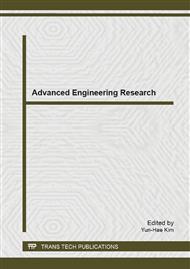p.532
p.536
p.540
p.545
p.549
p.557
p.562
p.567
p.572
Fiber Materials AC Impedance Spectroscopy and its Application
Abstract:
This article presents a recent study on the behavior of impedance versus frequency of fiber materials. When applying a constant amplitude, it was experimentally observed that the impedance of fiber materials first dropped steeply and then retained in a stable state being followed by a rapid increase with increasing inspiriting signal frequency. The overall impedance versus frequency curve revealed a bathtub-like shape. This behavior is therefore defined as bathtub phenomenon of fiber alternating current (AC) electric conductance. Analysis of the bathtub phenomenon, by using the circuit theory and medium polarization theory, revealed that there exist four different kinds of current in a fiber material when it is exposed to an AC electric field, viz., absorbing current, conductance current, charging current and superficial current. The study showed that this phenomenon is well consistent with and can be evaluated by the medium polarize theory. Understanding of the bathtub effect of fiber AC electric conductance provides a theoretical basis for development of a breaking-through solution to resolve many challenges of conventional impedance technique, such as greatness test error and electrode polarization, etc. The results of this research can be applied to the technology development of novel equipment design for the quick fiber moisture test.
Info:
Periodical:
Pages:
549-554
Citation:
Online since:
April 2014
Authors:
Price:
Сopyright:
© 2014 Trans Tech Publications Ltd. All Rights Reserved
Share:
Citation:


